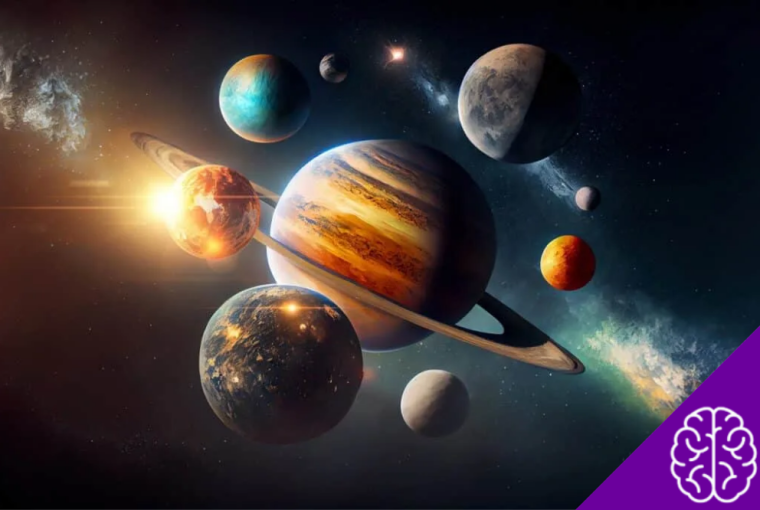February 2025 will treat stargazers and astronomy enthusiasts to a breathtaking spectacle—a rare alignment of seven planets across the night sky. This extraordinary cosmic event, often called a “planetary parade,” will see Mercury, Venus, Earth, Mars, Jupiter, Saturn, and Uranus positioned on the same side of the Sun, creating a stunning visual alignment from our earthly vantage point.
If you love exploring the wonders of space or simply enjoy staring at the stars, this is a once-in-a-lifetime opportunity to witness a celestial phenomenon that links science, magic, and beauty. Read on to learn why this alignment is so special, how and when to observe it, and why it matters to science and human curiosity.
What Is a Planetary Alignment?
Planetary alignment occurs when planets in our solar system align along a shared plane, appearing in a straight or semi-straight line from Earth’s perspective. It’s important to note that this doesn’t mean the planets are perfectly lined up in space, as their orbits exist at slight angles. From our position on Earth, however, they will give the illusion of alignment, creating the dazzling appearance of a planetary parade.
While smaller alignments of two or three planets occur fairly often, seeing as many as seven planets align is incredibly rare, making February 2025 a truly exceptional moment in astronomy.
Why This 2025 Alignment Is Significant
You may be wondering, “Why is this specific planetary alignment so special, and how often does something like this happen?”
The uniqueness of this event lies in two key factors:
- The Number of Planets
The alignment includes a combination of inner planets (Mercury, Venus, Mars) and outer planets (Jupiter, Saturn, Uranus). Alignments involving seven planets happen roughly once every 100-200 years.
- Visibility from Earth
This alignment will be visible with the naked eye or simple binoculars from many parts of the globe, offering a rare and accessible opportunity for everyone to marvel at space, regardless of their location or equipment.
Experts also believe that this alignment will offer a fantastic chance for scientific observation, space education, and global engagement with the wonders of astronomy.
How to Observe the 7-Planet Alignment
Prepare yourself to enjoy the cosmic show by marking the dates between February 3 and February 7, 2025, on your calendar. The exact dates and viewing windows depend on your location, but here’s a quick guide to ensuring you don’t miss the event.
Step 1: Find the Best Location
- Look for open spaces far from city lights and light pollution, such as fields, beaches, or countryside areas. The darker the sky, the better your view.
- If you’re in a city, try rooftop observatories or parks.
Step 2: Gear Up (Optional but Recommended)
While the alignment can be seen with your naked eye, using a pair of binoculars or a simple telescope will make the event even more impressive.
Step 3: Know the Time and Direction
- Best Viewing Time: Shortly before sunrise or shortly after sunset, depending on your region.
- Direction to Look: Face the eastern or western horizon, depending on where the Sun is rising or setting.
Checking local astronomy websites or using stargazing apps such as Stellarium or SkySafari can provide specific details based on your geographical location.
Step 4: Capture the Moment
Bring your camera—or even your smartphone—to capture this rare alignment. A tripod and long exposure settings can help you photograph the planetary parade in all its stunning detail.
What the 7-Planet Alignment Means for Science
While this event is spectacular to observe, it’s also of great scientific importance. Astronomers use celestial events like planetary alignments to:
- Study gravitational interactions among the planets.
- Examine how these alignments influence space weather, such as solar winds.
- Educate people about the vastness and interconnectedness of the solar system.
Events like these remind us of our place in the universe while inspiring future generations to look toward the stars.
Discover Humanity’s Fascination with Planetary Alignments
Throughout history, planetary alignments have held significant cultural, philosophical, and even mystical meaning for humans.
- Ancient Civilizations viewed these alignments as omens or messages from the gods. For instance, the Babylonians associated planetary movements with predictions for harvests and wars.
- Modern Perspectives connect alignments to scientific education and space exploration, encouraging curiosity and engagement with astronomy.
The 2025 planetary alignment invites both seasoned astronomers and casual stargazers to connect with a long-standing human tradition of looking skyward with wonder and curiosity.
How to Get the Most Out of This Event
Want to make the most of this alignment, not just for personal enjoyment but also to enrich others’ experiences? Consider these ideas:
- Host a Stargazing Event with friends, family, or a local astronomy club.
- Encourage Kids’ Curiosity by sharing fun facts or using apps to explore where each planet is located.
- Document the Event by journaling, creating art, or sharing photos on social media to spread the joy.
A Rare Opportunity to Reconnect with the Cosmos
The February 2025 alignment of seven planets reminds us of both the marvels of the universe and our place within it. Whether you’re a budding stargazer or a lifelong astronomy enthusiast, this celestial event provides the perfect opportunity to pause, look up, and experience the vast interconnected dance of the solar system.
Don’t miss this once-in-a-century chance to marvel at the wonders of space! Gather your binoculars, download a stargazing app, and mark your calendar.
And if you’re feeling inspired to continue your exploration of the cosmos, subscribe to our newsletter for regular updates on upcoming astronomy events, tips, and space facts.


